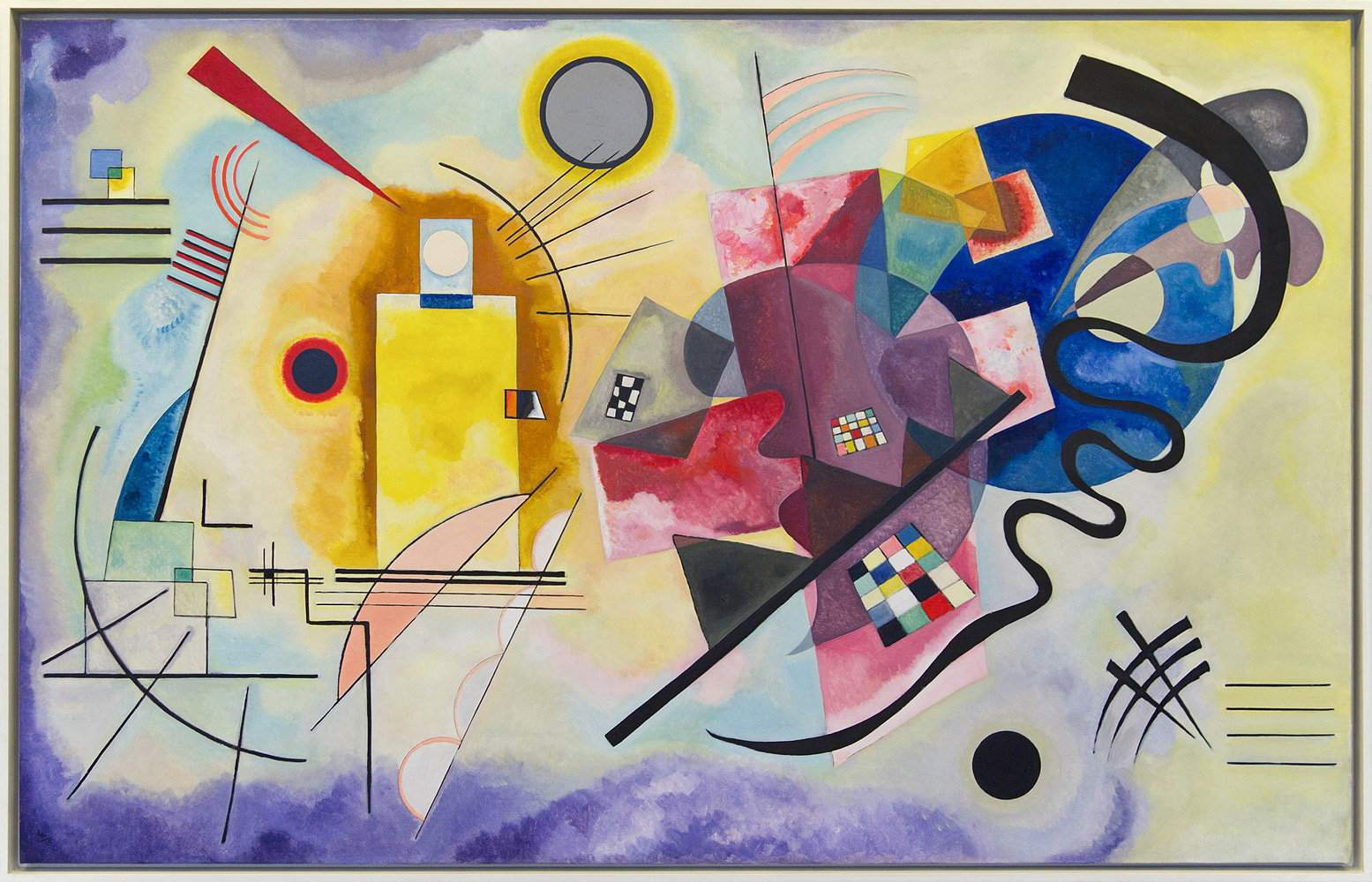Der Blaue Reiter (The Blue Rider) was an influential German art movement active primarily in the early 20th century, from 1911 to 1914. Founded by revolutionary artists Wassily Kandinsky, Franz Marc, Gabriele Münter, Alexej von Jawlensky, and Marianne von Werefkin, who were leading pioneers of classic modernism. The group believed that art should transcend mere representation and evoke emotional and spiritual experiences. The name “Der Blaue Reiter” is thought to have been inspired by Kandinsky’s love of the color blue and Marc’s fondness for horses, symbolizing spirituality and a deeper connection to nature.
The Blue Rider group, along with the artists’ association “Die Brücke” (The Bridge) in Dresden and Berlin, formed the most important movement for renewal in twentieth-century German art. In contrast to the figurative Expressionism of “Die Brücke” artists, the Blue Rider group developed a distinctive, radiantly colorful, expressive, and partly abstract formal vocabulary starting in 1908. The group was unified by the artists’ shared belief in a “spiritual” dimension of art, yet it accommodated diverse forms of expression. Founded on the principle of diversity and sustained by the artists’ unique personalities, the Blue Rider’s openness was the essence of its modernity.
The Lenbachhaus in Munich houses the world’s largest collection of works by the Blue Rider artists. The collection at the Lenbachhaus traces the evolution of the artists’ work from the nascent modernism of Kandinsky’s and Münter’s early oil studies to the landscapes of Murnau and iconic paintings in luminous colors such as Franz Marc’s “Blue Horse I” and “The Tiger.”
Key artists in the movement included Wassily Kandinsky, a pioneer of abstract art whose work focused on the use of color and form to evoke emotions and spirituality, and Franz Marc, known for his paintings of animals and his symbolic use of color to express deeper meanings and connections to nature. Other notable members included Paul Klee, August Macke, Gabriele Münter, Alexej von Jawlensky, Marianne von Werefkin, and Heinrich Campendonk. These artists experimented with new techniques and styles, moving away from traditional representation towards abstraction and emotional expression. They frequently used bold, vibrant colors to evoke emotions and convey symbolic meanings, often depicting themes of nature, animals, and spirituality to represent an idealized, harmonious relationship between humans and nature.
In 1912, Der Blaue Reiter published an almanac titled “Der Blaue Reiter Almanach,” which included essays, artworks, and musical scores. This publication served as a manifesto of their artistic philosophy and an exploration of various art forms. The group also organized several exhibitions showcasing their works alongside those of like-minded artists, highlighting the diversity and innovation within the group and helping to establish their influence in the art world.

Cover Design for The Blue Rider Almanac
The outbreak of World War I in 1914 led to the dissolution of the group, with Franz Marc and August Macke both killed in the war, and the surviving members went their separate ways. Nevertheless, Der Blaue Reiter left a lasting legacy, with their innovative approaches to color, form, and spirituality continuing to be celebrated and studied in art history.
Despite its short existence, Der Blaue Reiter had a profound impact on the development of modern art, particularly abstract art. Their emphasis on spiritual and emotional expression through color and form influenced later movements such as Abstract Expressionism.
Representative works from the movement include Wassily Kandinsky’s “Composition VII” (1913) and “Improvisation 28” (1912), Franz Marc’s “The Large Blue Horses” (1911) and “Fate of the Animals” (1913), Paul Klee’s “In the Style of Kairouan” (1914) and “Hammamet with Its Mosque” (1914), and August Macke’s “Lady in a Green Jacket” (1913) and “Promenade” (1913). Der Blaue Reiter was more than just an art movement; it was a philosophical and spiritual quest to find deeper meaning through art. Their works remain influential, continuing to inspire and evoke profound emotional responses in viewers and artists alike.








